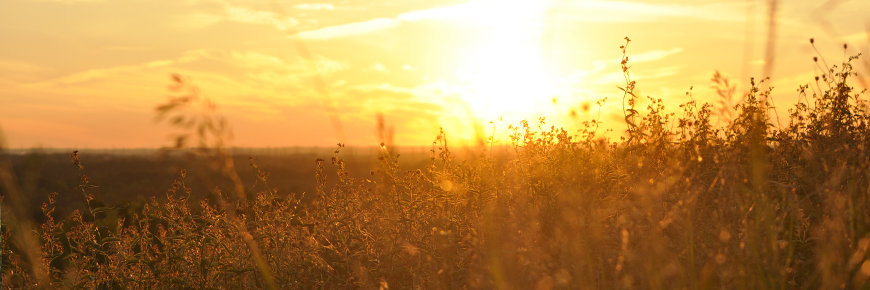
Climate change
Rouge National Urban Park
Climate change is a serious global issue that has the potential to significantly impact ecosystems, including those within Rouge National Urban Park. However, protected areas like the Rouge also play an important role in reducing the effects of climate change.
Average annual temperatures are currently rising at a much faster rate than in the past. If left unchecked, climate change could have serious global effects, including rising sea levels, more frequent severe weather events, food shortages, and species extinctions.
Climate change could also have many negative effects in the Rouge. Cool and cold water fish species, such as the endangered redside dace, could be negatively impacted if average annual temperatures continue to increase. Climate change may also result in more frequent and severe droughts, impacting both plant and animal life, particularly in wetlands and riparian areas along streams. A warming climate may leave many species without enough suitable habitat to sustain healthy populations.
Increasing temperatures could also have significant effects on the large population of migratory birds that spend their summers in the Rouge. Climate change may impact the timing and availability of important food sources that these birds rely on. For example, the earlier arrival of spring may lead to migratory birds missing the peak time for catching insects when they arrive at their northern breeding grounds.
Agriculture within Rouge National Urban Park may also be at risk from climate change. The rich Class 1 farmland within the park provides an important source of locally-grown food, but less rainfall and hotter temperatures could lead to significant reductions in crop yields.
Despite these challenges, protected areas such as Rouge National Urban Park play a significant role in combatting climate change. Protected areas help to conserve biodiversity and create more resilient ecosystems that can adapt to our changing climate. Networks of protected areas also create corridors that allow animals and plants to migrate or shift their ranges in response to climate change.
In addition to protecting plants and wildlife, protected areas also provide important ecosystem services such as storing and providing clean water, stabilizing soil, reducing the impacts of flooding, improving air quality, and storing carbon. These services also have economic and health benefits for local communities. Finally, protected areas provide recreation and learning opportunities for all of us. By visiting protected areas like Rouge National Urban Park, we hope that you will be inspired to help build a more sustainable future.
Here are some things we can all do to help combat climate change:
- Walk, bike, carpool, or take transit whenever possible
- Recycle and compost food scraps
- Reduce your energy usage at home
- Conserve water
- Date modified :